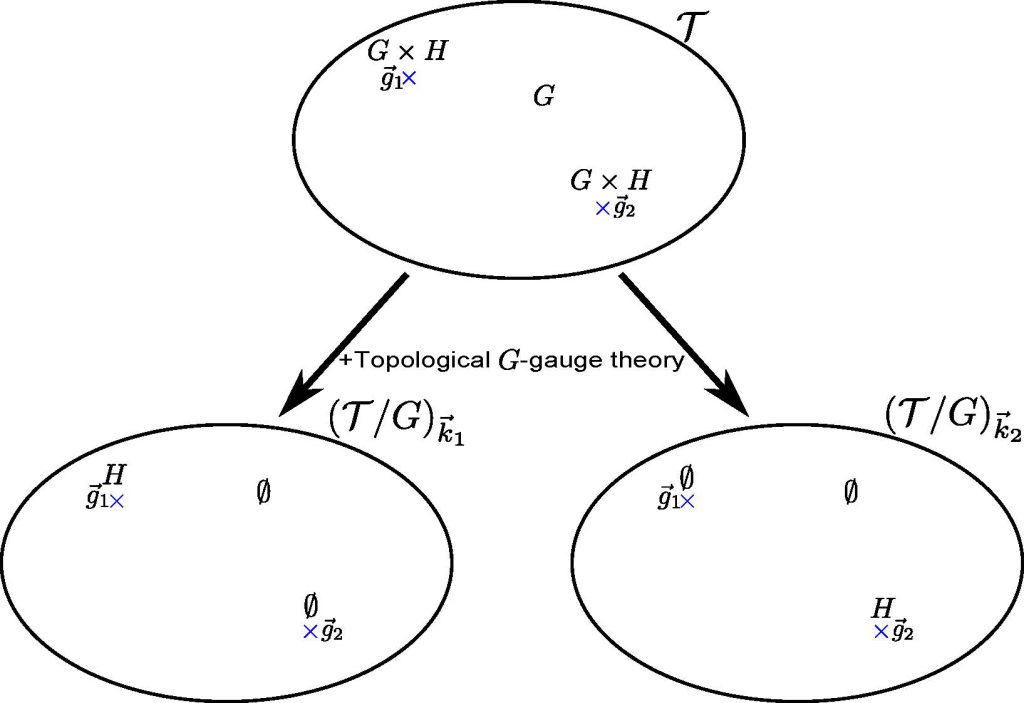Understanding Global Inconsistency and ’t Hooft Anomaly Using Simple Quantum Mechanics
© The Physical Society of Japan
This article is on
Global inconsistency, 't Hooft anomaly, and level crossing in quantum mechanics
(The 30th Outstanding Paper Award of the Physical Society of Japan)
Prog. Theor. Exp. Phys.
2017,
113B05
(2017)
.
This study explores the implications of global inconsistency and ’t Hooft anomalies for analyzing quantum field theories, using simple quantum mechanical models to provide valuable insights into these complex phenomena.
Understanding the nature of quantum matters is one of the profound challenges of contemporary physics. Quantum field theory (QFT) serves as a powerful tool for addressing this challenge and provides the long-range effective description of many-body systems. Strongly coupled QFTs are especially interesting but also very difficult to solve.
One approach to tackle these strongly coupled field theories is to focus on global symmetries, and close look at symmetries restricts possible behaviors of dynamics. For example, the ’t Hooft anomaly represents an obstruction to promoting the global symmetry to local gauge symmetry in a quantum system. This leads to ’t Hooft anomaly matching, which requires that the global symmetry transformations remain consistent across all energy scales, putting constraints on the low-energy dynamics of QFTs. ’t Hooft anomalies thus provide important non-perturbative data for solving strongly coupled QFTs.
Global inconsistency is a recently proposed concept that serves as a milder version of the ’t Hooft anomaly. Unlike the latter, it imposes less stringent constraints by not necessarily ruling out the presence of a trivial gapped phase, and it is important to uncover its correct physical consequences.
In this study, we investigated simple quantum mechanical models with theta parameters to understand the implications of global inconsistency in comparison to ’t Hooft anomalies. Although these models are simple, they share key symmetries and also anomalies and global inconsistency with more complex QFTs.
Our results show that global inconsistency can be satisfied either by ground-state degeneracy at one of the globally inconsistent couplings or by level-crossings separating them, which leads to phase transitions between different symmetry-protected topological states in the case of quantum many-body systems.
Our findings offer valuable insights into the role of global inconsistencies in QFTs, which underscores studying QFTs in the space of coupling constants instead of focusing on just a specific coupling. They demonstrate that it is possible to constrain the low-energy dynamics of strongly coupled QFTs like massless quantum chromodynamics by analyzing their anomalies.
Owing to these significant contributions to the field of quantum physics, this study was honored with The Outstanding Paper Award of the Physical Society of Japan.

Global inconsistency, 't Hooft anomaly, and level crossing in quantum mechanics
(The 30th Outstanding Paper Award of the Physical Society of Japan)
Prog. Theor. Exp. Phys.
2017,
113B05
(2017)
.
Share this topic
Fields
Related Articles
-
Understanding Non-Invertible Symmetries in Higher Dimensions Using Topological Defects
Theoretical Particle Physics
2024-9-27
By constructing Kramers-Wannier-Wegner duality and Z2 duality defects and deriving their crossing relations, this study presents the first examples of codimension one non-invertible symmetries in four-dimensional quantum field theories.
-
Quantum Mechanics of One-Dimensional Three-Body Contact Interactions
Mathematical methods, classical and quantum physics, relativity, gravitation, numerical simulation, computational modeling
Theoretical Particle Physics
2024-2-13
The quantum mechanical description of topologically nontrivial three-body contact interactions in one dimension is not well understood. This study explores the Hamiltonian description of these interactions using the path-integral formalism.
-
Investigating Unitarity Violation of Lee–Wick’s Complex Ghost with Quantum Field Theory
Theoretical Particle Physics
2024-1-19
Theories with fourth-order derivatives like Lee–Wick’s quantum electrodynamics model or quadratic gravity result in complex ghosts above a definite energy threshold that violate unitarity.
-
Investigating Δ and Ω Baryons as Meson–Baryon Bound States in Lattice Quantum Chromodynamics
Theoretical Particle Physics
2023-7-13
We investigate Δ and Ω baryons as meson–baryon bound states in lattice quantum chromodynamics and show that their difference results from the kinematic structure of the two meson–baryon systems, and not their interaction.
-
Novel Insights Into Bulk Reconstruction in the Anti-de Sitter/Conformal Field Theory Correspondence
Theoretical Particle Physics
2023-6-1
Bulk reconstruction in anti-de Sitter/conformal field theory is fundamental to our understanding of quantum gravity. We show that contrary to popular belief, bulk reconstruction is rather simple and intuitive.




